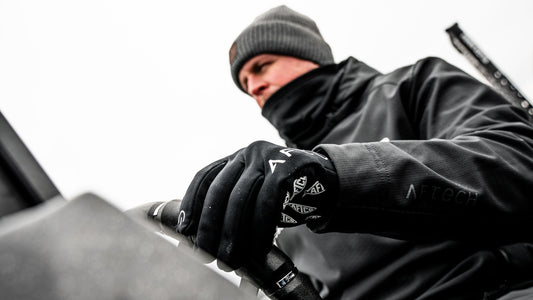
Good News for White Seabass Anglers & The Advancement of Proper Marine Aquaculture in the U.S.
Written By: Bill Shedd
HUBBS is one of AFTCO’s longest-standing 10% pledge partners. From its inception, the white seabass hatchery in Carlsbad has flourished on land owned by NRG Energy and leased to Hubbs-SeaWorld Research Institute (HSWRI) through California’s Ocean Resources Enhancement and Hatchery Program (OREHP). NRG’s recent generous donation of the hatchery property, along with adjacent acreage, marks a proud milestone for California’s saltwater sportfishing community and a bright future for responsible marine aquaculture in the United States.
This land transfer strengthens the long-term stability of a program anglers have supported for decades. It also strengthens the foundation for future U.S. aquaculture efforts—work that will be essential to producing reliable, high-quality domestic seafood while supporting healthy oceans and fisheries.
The Need for Aquaculture
The land donation also advances HSWRI’s plans for a Center of Excellence in Marine Aquaculture (CEMA). This is timely and important. Since the mid-1980s, global wild‐caught seafood production has plateaued, and aquaculture has filled the gap. Yet more than 85% of the seafood Americans consume is imported, much of it from countries where environmental oversight and food-safety standards vary widely.
U.S. aquaculture when done correctly is significantly more responsible and transparent than many global counterparts. CEMA will help establish the research foundation, standards, and best practices needed for the United States to lead in this field.
The U.S. has fallen behind much of the world in aquaculture development. Closing that gap will provide real value in the form of creating jobs, strengthening food security, and supporting better ocean stewardship. More importantly, it will enable the United States to demonstrate how marine aquaculture can be done properly to mutually benefit consumers and the marine environment.
A Moment Worth Recognizing
NRG’s donation gives the Carlsbad hatchery the long-term stability it needs to continue the work anglers and scientists have supported for decades. It also helps build a stronger foundation for responsible U.S. aquaculture — something this country must develop if we want a reliable, environmentally sound seafood supply. For anglers, conservationists, and anyone who cares about healthy coastal waters, this represents truly good news and an opportunity to move forward in a way that benefits both the ocean and the communities that depend on it.

Why This Matters to West Coast Anglers
OREHP has been funded for decades through recreational fishing license sales, and excise taxes on recreational fishing tackle. Since the mid-1980s, HSWRI has raised and released more than two million juvenile white seabass into Southern California waters — a milestone highlighted in How a Hatchery Program in California Became Successful. The long-term stability of the Carlsbad hatchery is crucial to continuing that work, and the donation of the land helps secure its future.
2025 Broodstock Additions
In 2025, the program advanced when staff and volunteers added new broodstock to the grow-out pens at Catalina Island’s Cat Harbor. Longtime program leader Jock Albright, fishing aboard his Kea Kai, has guided this effort for years. Experienced anglers, live-bait suppliers, researchers, and volunteers handle the demanding work of broodstock collection. Individuals like Jock, his son Charlie, and anglers such as Dave Elm donate their time, boats, and expertise for years — quiet contributions that remain essential to the program’s success.
In total, the Kea Kai and Rasta Fish contributed 11 broodstock fish in 2025. While it was a slower year than usual, the team is optimistic and looking forward to stronger returns in 2026.

About Hubbs-SeaWorld Research Institute
HSWRI has been a leader in applied marine science since 1963, conducting practical research that benefits fisheries, coastal communities, and marine ecosystems. Their broader mission is outlined in our Hubbs-SeaWorld Research Institute article.
Their work on the white seabass program is especially important. HSWRI pioneered the techniques needed to raise white seabass from hatch to release and continues to improve genetics, feeding, disease control, and release strategies. Their partnership with CCA California and recreational anglers has created a model for community-supported, science-based conservation. The angler head-donation program — described in Donate Your Seabass Head for Scientific Research— is one example of how the public helps provide the genetic data needed to evaluate long-term success.
NRG’s donation of the hatchery property and the 2025 broodstock additions represent significant wins for California’s sportfishing community. They stand as a tribute to the scientists and anglers whose long-standing commitment is shaping a stronger, more sustainable future for coastal fisheries.





